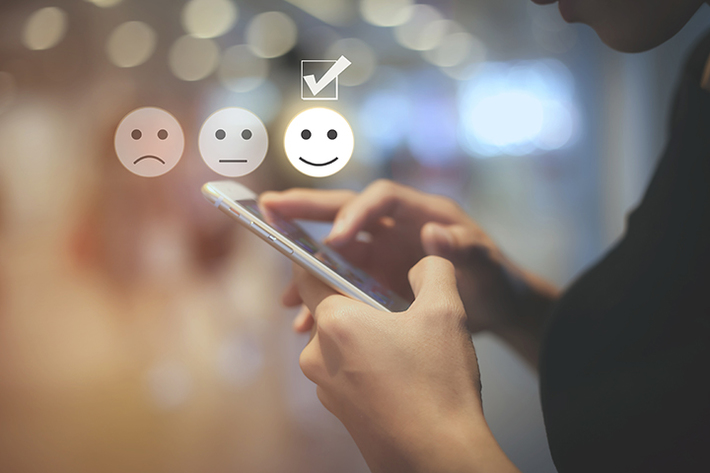What is Sentiment Analysis?
Sentiment analysis can be defined as analysing the positive or negative sentiment of the customer in text. The contextual analysis of identifying information helps businesses understand their customers’ social sentiment by monitoring online conversations.
1. Brand Monitoring
A brand is not defined by the product it manufactures. It depends on how you build a brand by online marketing, social campaigning, content marketing, and customer support services. Getting full 360 views of how your customers view your product, company, or brand is one of the most important uses of sentiment analysis.
Sentiment analysis enables you to quantify the perception of potential customers. Analysing social media and surveys, you can get key insights about how your business is doing right or wrong for your customers.
Companies tend to use sentiment analysis as a powerful weapon to measure the impact of their products and campaigns on their customers and stakeholders. Brand monitoring allows you to have a wealth of insights from the conversions about your brand in the market. Sentiment analysis enables you to automatically categorize the urgency of all brand mentions and further route them to the designated team.
Keeping the feedback of the customer in knowledge, you can develop more appealing branding techniques and marketing strategies that can help make quick transitions.
2. Customer Service
Customer service companies often use sentiment analysis to automatically classify their user incoming calls into “urgent” and “not urgent” classes. The classification is based on the sentiments of the emails or proactively identifying the calls of frustrated customers.
The customer expects their experience with the companies to be intuitive, personal, and immediate. Therefore, the service providers focus more on the urgent calls to resolve users’ issues and thereby maintain their brand value. Therefore, analyse customer support interactions to make sure that your employees are following the appropriate process. Moreover, increase the efficiency of your services so that customers aren’t left waiting for support for longer periods.
As the customer service sector has become more automated using machine learning, understanding customers’ sentiments has become more critical than ever before. For the same reason, companies are opting for NLP-based chatbots as their first line of customer support to better grasp context and intent of the conversations.
3. Finance and Stock Monitoring
It is said that “Be fearful when others are greedy and be greedy when others are fearful.” But here, the question that arises: how do you know if others are fearful or greedy? Well, here, you can make use of the sentiment analysis technique. Making investments, especially in the business world, is quite tricky. The stocks and market are always on the edge of risks, but they can be condensed if you do correct research before investing.
For instance, if you are looking to invest in the automobile industry and are confused about choosing between company X and company Y, you can look at the sentiments received from the company for their latest products. It will help you to find the one that is performing better in the market.
4. Business Intelligence Buildup
Digital marketing plays a prominent role in business. Social media often displays the reactions and reviews of the product. When you are available with the sentiment data of your company and new products, it is a lot easier to estimate your customer retention rate.
Sentiment analysis enables you to determine how your product performs in the market and what else is needed to improve your sales. You can also analyse the responses received from your competitors. Based on the survey generated, you can satisfy your customer’s needs in a better way. You can make immediate decisions that will help you to adjust to the present market situation.
Business intelligence is all about staying dynamic. Therefore, sentiment analysis gives you the liberty to run your business effectively. For example, if you come up with a big idea, you can test and analyse it before bringing life to it.
5. Enhancing the Customer Experience
A satisfying customer experience means a higher chance of returning the customers. A successful business knows that it is important to take care of how they deliver compared to what they deliver.
Brand Monitoring offers us unfiltered and invaluable information on customer sentiment. However, you can also put this analysis on customer support interactions and surveys.
NPS (Net Promoter Score) surveys help you gain feedback for your business with the simple question: Will you recommend this brand, product, or service to your friend or family? The output is a single score on the number scale. Businesses use these sentiment scores to analyse the customer as promoters, detractors, and passives.
Here the goal is to find the overall customer experience and elevate your customer to promoter level. Theoretically, include the phases as: will buy more, stay longer and refer to another customer.
The next step in the NPS survey is to ask survey participants to leave the score and seek open-ended responses, i.e., qualitative data. Qualitative surveys are far more challenging to analyse. Still, with the help of sentiment analysis, these texts can be classified into multiple categories, which offer further insights into customers’ opinions.
As mentioned earlier, the experience of the customers can either be positive, negative, or neutral. Depending on the customers’ reviews, you can categorize the data according to its sentiments. This classification will help you properly implement the product changes, customer support, services, etc.
Also, remember that getting a positive response to your product is not always enough. The customer support services of your company should always be impeccable irrespective of how phenomenal your services are.
6. Market Research and Analysis
Business intelligence uses sentiment analysis to understand the subjective reasons why customers are or are not responding to something, whether the product, user experience, or customer support.
Sentiment analysis will enable you to have all kinds of market research and competitive analysis. It can make a huge difference whether you are exploring a new market or seeking an edge on the competition.
You can review your product online and compare them to your competition. You can also analyse the negative points of your competitors and use them to your advantage.
Sentiment analysis is used in sociology, psychology, and political science to analyse trends, opinions, ideological bias, gauge reaction, etc. A lot of these sentiment analysis applications are already up and running.
Read full article here


